

单个GPU就能跑!UC伯克利领头,130亿参数「小羊驼」权重公布
source link: https://www.51cto.com/article/751130.html
Go to the source link to view the article. You can view the picture content, updated content and better typesetting reading experience. If the link is broken, please click the button below to view the snapshot at that time.

单个GPU就能跑!UC伯克利领头,130亿参数「小羊驼」权重公布
3月31日,UC伯克利联手CMU、斯坦福、UCSD和MBZUAI,推出了130亿参数的Vicuna,俗称「小羊驼」(骆马),仅需300美元就能实现ChatGPT 90%的性能。
今天,团队正式发布了Vicuna的权重——只需单个GPU就能跑!
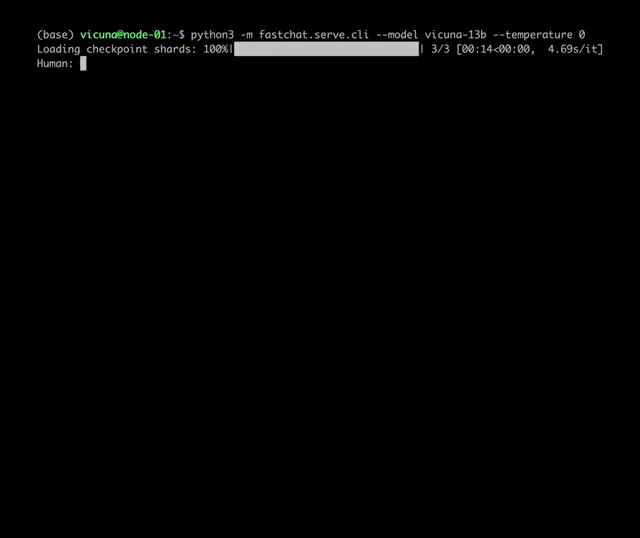
项目地址:https://github.com/lm-sys/FastChat/#fine-tuning
130亿参数,90%匹敌ChatGPT
Vicuna是通过在ShareGPT收集的用户共享对话上对LLaMA进行微调训练而来,训练成本近300美元。
研究人员设计了8个问题类别,包括数学、写作、编码,对Vicuna-13B与其他四个模型进行了性能测试。
测试过程使用GPT-4作为评判标准,结果显示Vicuna-13B在超过90%的情况下实现了与ChatGPT和Bard相匹敌的能力。同时,在在超过90%的情况下胜过了其他模型,如LLaMA和斯坦福的Alpaca。
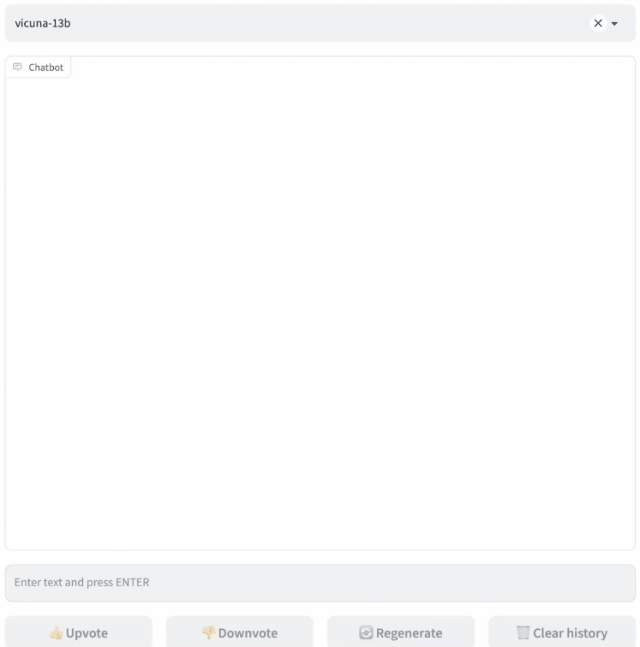
Vicuna-13B的训练流程如下:
首先,研究人员从ChatGPT对话分享网站ShareGPT上,收集了大约70K对话。接下来,研究人员优化了Alpaca提供的训练脚本,使模型能够更好地处理多轮对话和长序列。之后利用PyTorch FSDP在8个A100 GPU上进行了一天的训练。
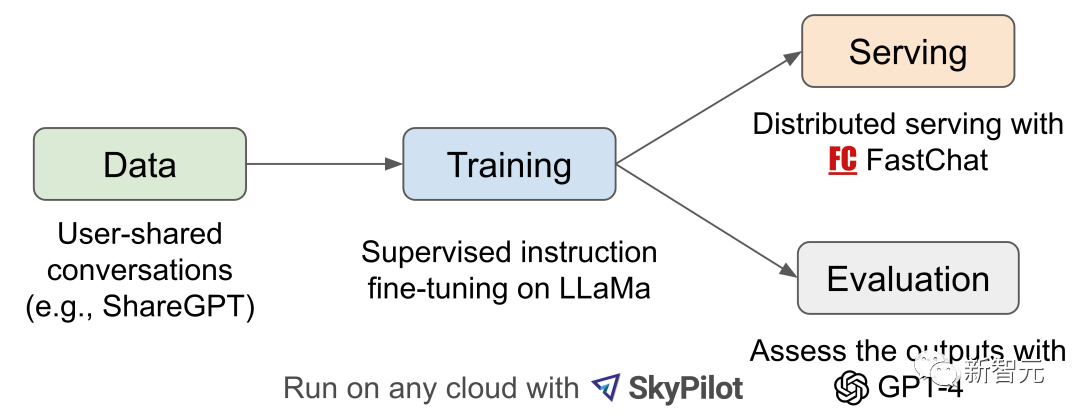
- 内存优化:
为了使Vicuna能够理解长上下文,将最大上下文长度从Alpaca的512扩展到2048,这大大增加了GPU内存需求。在此,研究人员通过使用梯度检查点和闪存注意力来解决内存压力。
- 多轮对话:
通过调整训练损失以考虑多轮对话,并仅在聊天机器人的输出上计算微调损失。
- 通过Spot实例降低成本:
采用SkyPilot托管的Spot实例来降低成本,将7B模型的训练成本从500美元降低到约140美元,将13B模型的训练成本从约1000美元降低到300美元。
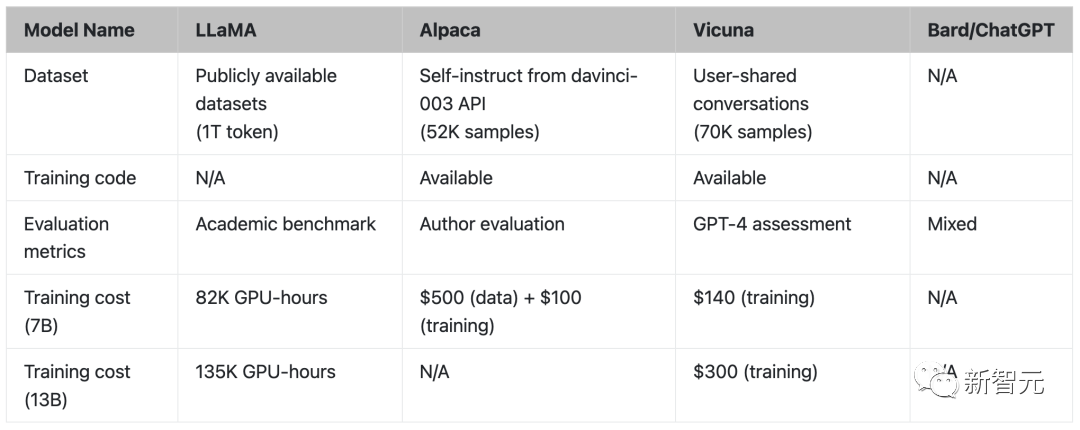
在模型的质量评估方面,研究人员创建了80个不同的问题,并用GPT-4对模型输出进行了评价。
为了比较不同的模型,研究人员将每个模型的输出组合成一个单独的提示,然后让GPT-4评估哪个模型给出的回答更好。
其中,GPT-4在超过90%的问题中更喜欢Vicuna,而不是现有的SOTA开源模型(LLaMA、Alpaca)。
在45%的问题中,GPT-4认为Vicuna的回答和ChatGPT差不多甚至更好。
综合来看,Vicuna在总分上达到ChatGPT的92%。
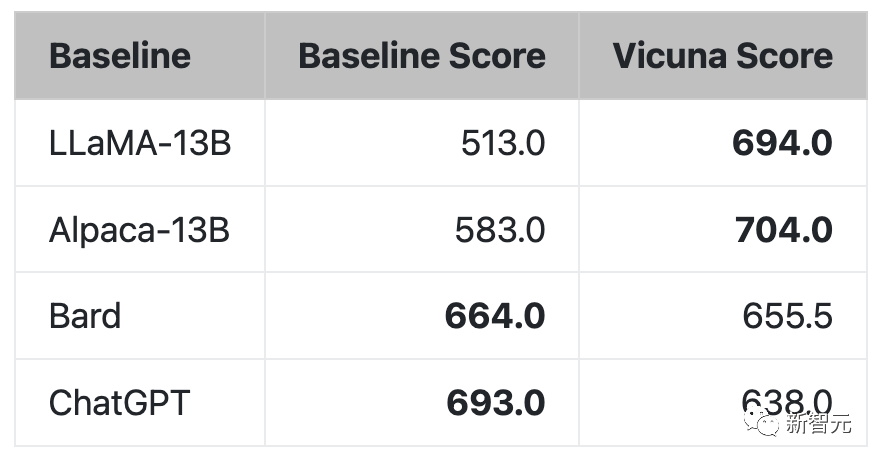
# Install FastChat
pip3 install fschat
# Install a specific commit of huggingface/transformers
# Our released weights do not work with commits after this due to some upstream changes in the tokenizer.
pip3 install git+https://github.com/huggingface/transformers@c612628045822f909020f7eb6784c79700813eda1. clone版本库并变更目录到FastChat文件夹
git clone https://github.com/lm-sys/FastChat.git
cd FastChat2. 安装Package
pip3 install --upgrade pip # enable PEP 660 support
pip3 install -e .根据LLaMA模型的许可,权重将以delta的形式发布。只需将其加到原来的LLaMA权重上,就可以获得最终的Vicuna权重。
1. 按照huggingface上的说明,获得原始的LLaMA权重
2. 通过脚本,自动从团队的Hugging Face账户上下载delta权重
python3 -m fastchat.model.apply_delta \
--base /path/to/llama-13b \
--target /output/path/to/vicuna-13b \
--delta lmsys/vicuna-13b-delta-v0- 单个GPU
Vicuna-13B需要大约28GB的GPU显存。
python3 -m fastchat.serve.cli --model-name /path/to/vicuna/weights- 多个GPU
如果没有足够的显存,则可以使用模型并行来聚合同一台机器上多个GPU的显存。
python3 -m fastchat.serve.cli --model-name /path/to/vicuna/weights --num-gpus 2- 仅用CPU
如果想在CPU上运行,则需要大约60GB的内存。
python3 -m fastchat.serve.cli --model-name /path/to/vicuna/weights --device cpuWeb UI
- 启动控制器
python3 -m fastchat.serve.controller- 启动model worker
python3 -m fastchat.serve.model_worker --model-path /path/to/vicuna/weights当进程完成模型的加载后,会看到「Uvicorn running on ...」。
- 发送测试消息
python3 -m fastchat.serve.test_message --model-name vicuna-13b· 启动gradio网络服务器
python3 -m fastchat.serve.gradio_web_server现在,你就可以打开浏览器和模型聊天了。
Vicuna是通过使用从ShareGPT收集到的大约7万个用户共享的对话与公共API来微调一个LLaMA基础模型而创建的。
为了确保数据质量,团队将HTML转换回markdown,并过滤掉一些不合适或低质量的样本。此外,团队还将冗长的对话分成较小的片段,以符合模型的最大上下文长度。
- 代码和超参数
团队使用斯坦福大学Alpaca的代码对模型进行微调,并做了一些修改以支持梯度检查点和Flash注意力。此外,团队也使用与斯坦福Alpaca相似的超参数。

- 用SkyPilot在云服务上进行微调
SkyPilot是由加州大学伯克利分校建立的一个框架,可以在任何与一个云服务(AWS、GCP、Azure、Lambda等)上轻松、经济地运行ML工作负载。
安装说明:https://skypilot.readthedocs.io/en/latest/getting-started/installation.html
# Install skypilot from the master branch
pip install git+https://github.com/skypilot-org/skypilot.gitVicuna可以在8个拥有80GB内存的A100 GPU上进行训练。下面的命令将自动启动一个满足要求的节点,在上面设置并运行训练作业。
sky launch -c vicuna -s scripts/train-vicuna.yaml --env WANDB_API_KEY对于Alpaca来说,训练作业会在具有4个A100-80GB GPU的单一节点上启动。
sky launch -c alpaca -s scripts/train-alpaca.yaml --env WANDB_API_KEY· 使用本地GPU进行微调Vicuna也可以用以下代码在8个A100 GPU上训练,显存为80GB。
如果要在更少的GPU上训练,则可以减少per_device_train_batch_size,并相应地增加gradient_accumulation_steps,以保持全局批大小不变。要设置环境,可以参见scripts/train-vicuna.yaml中的设置部分。
torchrun --nnodes=1 --nproc_per_node=8 --master_port=<your_random_port> \
fastchat/train/train_mem.py \
--model_name_or_path <path-to-llama-model-weight> \
--data_path <path-to-data> \
--bf16 True \
--output_dir ./checkpoints \
--num_train_epochs 3 \
--per_device_train_batch_size 4 \
--per_device_eval_batch_size 4 \
--gradient_accumulation_steps 1 \
--evaluation_strategy "no" \
--save_strategy "steps" \
--save_steps 1200 \
--save_total_limit 100 \
--learning_rate 2e-5 \
--weight_decay 0. \
--warmup_ratio 0.03 \
--lr_scheduler_type "cosine" \
--logging_steps 1 \
--fsdp "full_shard auto_wrap" \
--fsdp_transformer_layer_cls_to_wrap 'LlamaDecoderLayer' \
--tf32 True \
--model_max_length 2048 \
--gradient_checkpointing True \
--lazy_preprocess True参考资料:
https://github.com/lm-sys/FastChat/#fine-tuning
Recommend
About Joyk
Aggregate valuable and interesting links.
Joyk means Joy of geeK